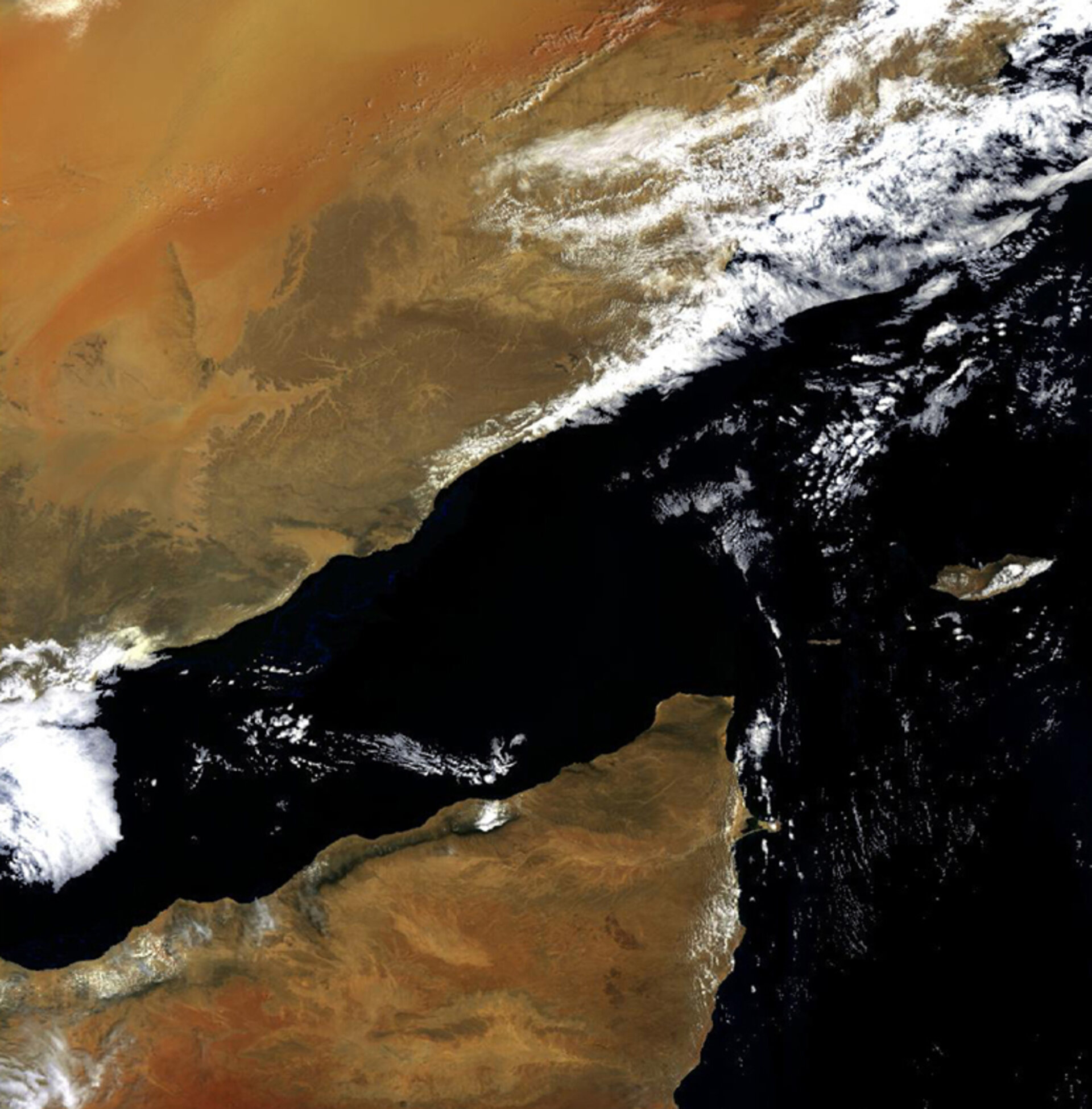Earth from Space: The Gulf of Aden – the gateway to Persian oil
The Gulf of Aden, captured in this Envisat image, is located in the Indian Ocean and is situated between Yemen (seen above the gulf) on the south coast of the Arabian Peninsula and Somalia (seen below the gulf) in Africa.
The gulf – roughly 900 kilometres long and 500 kilometres wide – is an important waterway for transporting Persian Gulf oil. Together with the Red Sea, which it connects with in the northwest through the Bab el Mandeb sound, it forms an essential oil transport route between Europe and the Far East.
The Gulf of Aden, which runs in a west-east direction, and the Red Sea have been used for thousands of years for fishing, trading and transportation. Located on the great Mediterranean Sea-Indian Ocean trade route, the gulf was a strategic waterway sought by Portugal, Turkey and Great Britain in the 16th century. Britain prevailed and dominated the gulf by the 19th century.
When the British military withdrew from the area in the late 1960s, the use of the gulf was diminished due to the closing of the Suez Canal. Egypt renovated and reopened the canal in 1975, boosting activity in the gulf once again.
In recent years, the gulf has received a lot of attention due to piracy, terrorism and refugee smuggling. In October 2000, suicide bombers attacked and nearly sank the U.S. destroyer Cole in the gulf, and in 2002 the French oil tanker MIV Limburg, carrying Persian Gulf crude oil, was attacked.
According to the United Nations High Commissioner for Refugees (UNHCR), 142 people died and another 40 went missing between 12-23 January this year while trying to cross the Gulf of Aden from the Horn of Africa to the coast of Yemen in search of gaining refugee status.
Last September the UNHCR called for international action to stem the flow of people falling prey to smugglers after at least another 150 passengers died within a three-week period. The refugee agency and local authorities have been raising awareness via radio broadcasts and video productions about the dangers of using smugglers to cross the Gulf of Aden.
The island seen in the image off the tip of Somalia is Socotra, which is part of an archipelago (not visible). According to the United Nations Environment Programme (UNEP), the group of islands are of global significance for biodiversity and species endemism, with over one third of its flora and fauna being found nowhere else.
Socotra has been isolated biologically and has remained virtually untouched by modern development. The water around the archipelago remains pristine, having been unaltered by coastal pollution or over-exploitation.
Envisat's Medium Resolution Imaging Spectrometer (MERIS) acquired this image on 1 March 2005.






